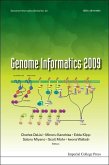This proceedings volume describes the current state of research dealing with biological shape analysis. The quantitative analysis of the shape of biological organisms represents a challenge that has now seen breakthroughs with new methodologies such as elliptical Fourier analysis, quantitative trait loci analysis (QTLs), thin plate splines, etc. The volume also illustrates the diversity of disciplines that are actively involved in the characterization and analysis of the biological shape. Some of the papers deal with the need to relate the underlying genome responsible for the actual observed characteristics of form. Moreover, many of the papers focus on the relationship of the shape to the processes that determine the biological form, an issue of major continuing concern in biology. This volume brings together for the second time practitioners from a variety of disciplines who have been concerned with the necessity of applying new methods to the analysis of biological shape. Previous methodologies based on the conventional metrical approach (distances, angles and ratios), have not been able to adequately capture in quantitative terms the subtleties and complexities of biological form due to its irregularity. This volume represents an initial attempt to quantitatively characterize the biological form in both two- and three-dimensions, as it is actually perceived. There is no volume available that deals with the subject matter of these Proceedings. The papers represent, as in the first proceedings, a unique look at: (1) new methodologies developed and used quantitatively describe the biological form; (2) the need to relate the observed biological shape to the underlying processes that determine the shape; and (3) the tremendous diversity of disciplines actively involved in the characterization and analysis of biological shapes. These range from physical anthropology, anatomy, genetics, botany, entomology, forensics, to applied mathematics, etc.








